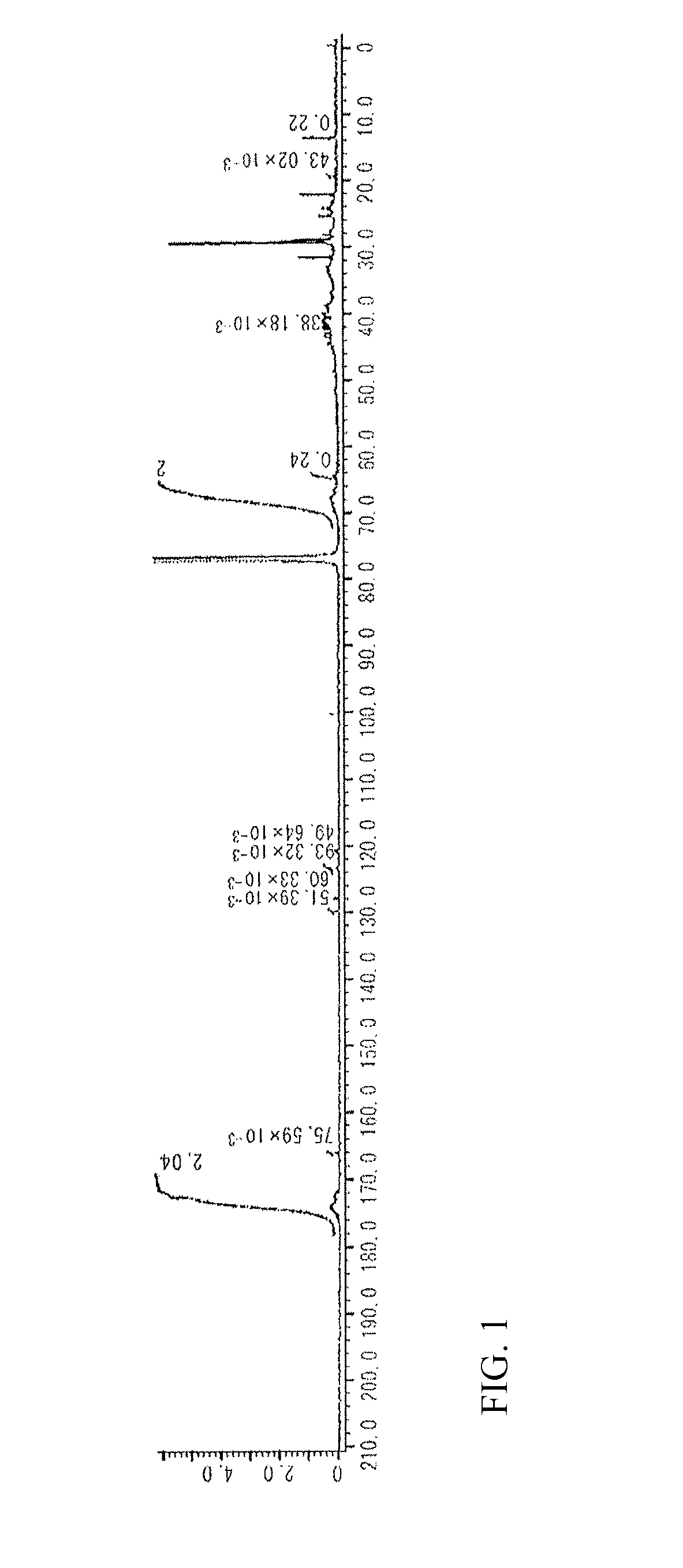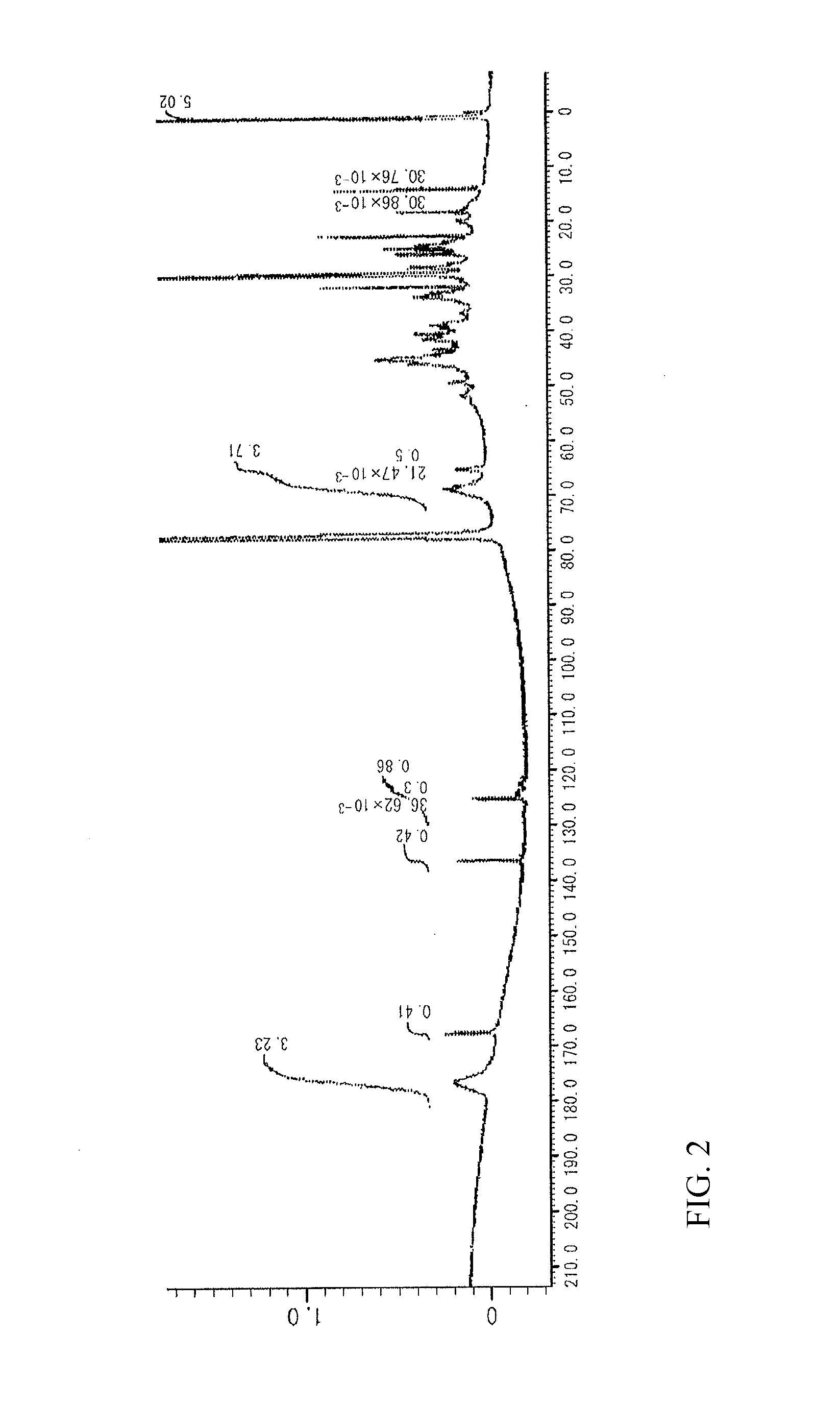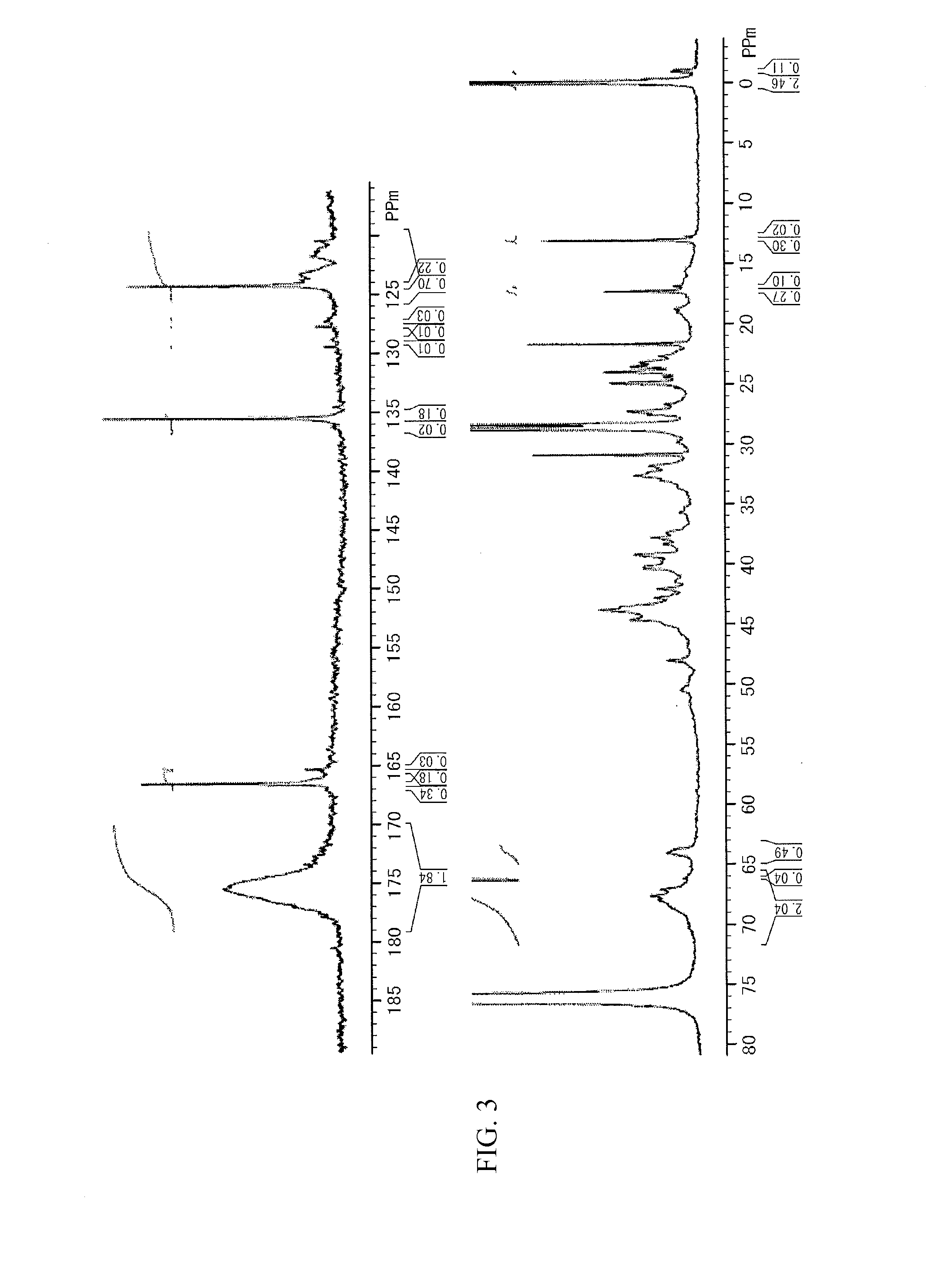Curable composition containing silicon-containing highly-branched polymer
a polymer and polymer technology, applied in the direction of dyeing process, nuclear engineering, synthetic resin layered products, etc., can solve the problems of affecting the appearance of high-quality plastic materials. , to achieve the effect of high dispersivity in resins, high solubility in organic solvents, and fine particle-like behavior
- Summary
- Abstract
- Description
- Claims
- Application Information
AI Technical Summary
Benefits of technology
Problems solved by technology
Method used
Image
Examples
reference example 1
Production of Lipophilic Highly Branched Polymer (Lipophilic HBP) Using ADCP, STA, and ADVN
[0223]Into a 300-mL reaction flask, 91 g of MIBK was placed, and nitrogen was flowed for 5 minutes while the solvent was stirred. The flask was heated until the solvent was refluxed (at about 116° C.).
[0224]Separately, into a 200-mL reaction flask, 6.1 g (20 mmol) of ADCP as the monomer A, 2.0 g (6 mmol) of STA as the monomer B, 4.0 g (16 mmol) of ADVN as the polymerization initiator C, and 91 g of MIBK were placed. Nitrogen was flowed into the flask for 5 minutes while the mixture was stirred to purge the system with nitrogen.
[0225]To the MIBK being refluxed in the 300-mL reaction flask, the contents in the 200-mL reaction flask, in which ADCP, STA, and ADVN had been placed, were added dropwise with a dropping pump over 30 minutes. After the completion of the dropwise addition, the mixture was stirred for another 1 hour.
[0226]Next, 163 g of MIBK was distilled off from the reaction solution wi...
reference example 2
Production of Silicon-Containing Highly Branched Polymer (Si-HBP-1) Using DCP, PSPA, STA, and ADVN
[0228]Into a 300-mL reaction flask, 100 g of MIBK was placed, and nitrogen was flowed for 5 minutes while the solvent was stirred. The flask was heated until the solvent was refluxed (at about 116° C.).
[0229]Separately, into a 200-mL reaction flask, 6.7 g (20 mmol) of DCP as the monomer D, 1.0 g (0.2 mmol) of PSPA as the monomer E, 3.2 g (10 mmol) of STA as the monomer F, 3.0 g (12 mmol) of ADVN as the polymerization initiator G, and 100 g of MIBK were placed. Nitrogen was flowed into the flask for 5 minutes while the mixture was stirred to purge the system with nitrogen.
[0230]To the MIBK being refluxed in the 300-mL reaction flask, the contents in the 200-mL reaction flask, in which DCP, PSPA, STA, and ADVN had been placed, were added dropwise with a dropping pump over 30 minutes. After the completion of the dropwise addition, the mixture was stirred for another 1 hour.
[0231]Next, 186 ...
reference example 3
Production of Silicon-Containing Highly Branched Polymer (Si-HBP-2) Using DCP, STA, and ADVN
[0234]4.2 g of a target compound (Si-HBP-2) as a white powder was yielded in the same manner as in Reference Example 2 except that the amount of PSPA placed was changed to 0.5 g (0.1 mmol).
[0235]FIG. 3 shows a 13C NMR spectrum of the obtained target compound. The unit structure formulation (molar ratio) of Si-HBP-2 of the structural formulae shown below, which was calculated from the 13C NMR spectrum, was a ratio DCP unit [D]:PSPA unit [E]: STA unit [F]:ADVN unit [G] of 58:1:29:12. The target compound had a weight average molecular weight Mw of 7,600 measured by GPC in terms of polystyrene, a degree of distribution Mw / Mn of 2.4, a glass transition temperature Tg of 71.5° C., and a 5% weight loss temperature Td5% of 293.7° C.
In the formulae, the black points are bonding terminals.
PUM
| Property | Measurement | Unit |
|---|---|---|
| thickness | aaaaa | aaaaa |
| temperature | aaaaa | aaaaa |
| temperature | aaaaa | aaaaa |
Abstract
Description
Claims
Application Information
 Login to View More
Login to View More - R&D
- Intellectual Property
- Life Sciences
- Materials
- Tech Scout
- Unparalleled Data Quality
- Higher Quality Content
- 60% Fewer Hallucinations
Browse by: Latest US Patents, China's latest patents, Technical Efficacy Thesaurus, Application Domain, Technology Topic, Popular Technical Reports.
© 2025 PatSnap. All rights reserved.Legal|Privacy policy|Modern Slavery Act Transparency Statement|Sitemap|About US| Contact US: help@patsnap.com



